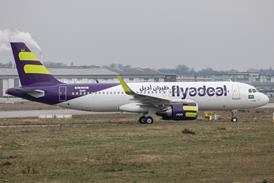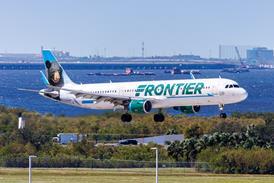PAUL LEWIS / WASHINGTON DC
Short-term plans include phased avionics and structural upgrades to F/A-18C/Ds
Kuwait is looking to acquire up to 20 Boeing F/A-18E/F Super Hornet fighters around 2005 and beyond, while embarking on a near-term two-phase structural and avionics enhancement of its air force's fleet of 40 F-18C/D Hornets.
The Kuwait minister of defence, Jaber Mubarak al Sabah, has reportedly said that the state intends to acquire more F/A-18s and Boeing AH-64D Longbow Apaches.
Kuwaiti sources say the air force prefers to wait until the Block 2 Super Hornet version is available in 2005, equipped with the Raytheon APG-79 active electronically scanned array radar, and in the meantime proceed with the purchase of 16 attack helicopters (Flight International, 4-10 December 2001).
Tentative plans revolve around re-equipping half of the current Hornet fleet with F/A-18E/Fs and trading in the replaced aircraft. Potential buyers have been identified, including Switzerland, which wants eight to 12 additional aircraft for reconnaissance to supplement its 34 F/A-18C/Ds.
Malaysia meanwhile is looking at possibly swapping its eight two-seat F/A-18Ds, having just requested price and availability data for new Super Hornets from the US government.
Kuwait has embarked on an upgrade of its 32 F/A-18Cs and eight tandem-seat fighters, which were delivered in 1991-3 to a Lot 14/15 standard.
The air force wants to upgrade the aircraft to the same Lot 19/20 configuration as the last US Navy Hornets built before the production line closed. It has awarded a contract covering 13 airframe upgrades, relating mainly to age, such as cracked inlet-duct skin, and bulkhead and keel fasteners.
A package of avionics and sensor improvements is under discussion.
This includes replacing the current Raytheon APG-65 with the APG-73 multi-mode radar, installing an upgraded mission computer, Northrop Grumman/ITT ALQ-165 ASPJ internal jammer, Raytheon ALR-67(V) radar warning receiver, BAE ALE-47 self-defence dispenser, Harris TAMMAC digital moving map and a global positioning system.
Source: Flight International























